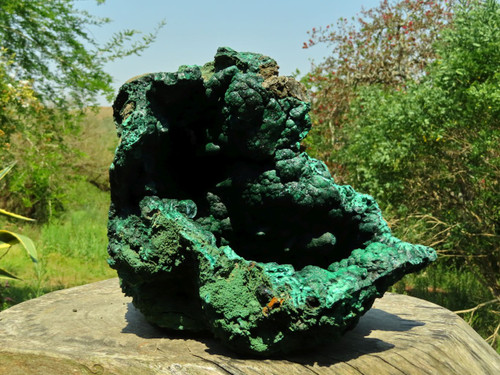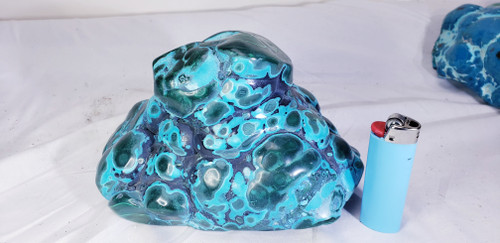Natural XX Rare XXL Malachite Stalactitic Crystalline Specimen - Museum Quality Table Top Specime
Weight: 18.3 Kg / 40.4 lbs
Size: 360 x 220 x 240 mm / 14.2 x 8.7 x 9.4 inches
Origin: Kolwezi, Congo
Grade: A Grade
Over 30+ fingers of sparkling stalactites! Stunning stalactite formations which are exceptionally rare. Generally speaking Malachite is a green copper carbonate hydroxide mineral with a chemical composition of Cu2(CO3)(OH)2. It was one of the first ores used to produce copper metal. Malachite mined from the Congo is typically done so to get the copper content - therefore getting specimen grade material can be rather difficult. Malachite has a widely variable growth ranging from botryoidal, to silky and stalactite like forms. The weight to size ratio of specimens can also have a wide range of variation depending on the density of the material. Highly dense banded or flower pattern material is considered best for cutting and jewelry while rich color and chatoyancy is considered important for specimens. Botryoidal material is by far the most commonly available, while silky / fibrous is fairly difficult to obtain. Lastly, of all, Stalactite specimens are the most rare, desirable and collectable.
Actual item shown.
Over 30+ fingers of sparkling stalactites! Stunning stalactite formations which are exceptionally rare. Generally speaking Malachite is a green copper carbonate hydroxide mineral with a chemical composition of Cu2(CO3)(OH)2. It was one of the first ores used to produce copper metal. Malachite mined from the Congo is typically done so to get the copper content - therefore getting specimen grade material can be rather difficult. Malachite has a widely variable growth ranging from botryoidal, to silky and stalactite like forms. The weight to size ratio of specimens can also have a wide range of variation depending on the density of the material. Highly dense banded or flower pattern material is considered best for cutting and jewelry while rich color and chatoyancy is considered important for specimens. Botryoidal material is by far the most commonly available, while silky / fibrous is fairly difficult to obtain. Lastly, of all, Stalactite specimens are the most rare, desirable and collectable.
Actual item shown.

















